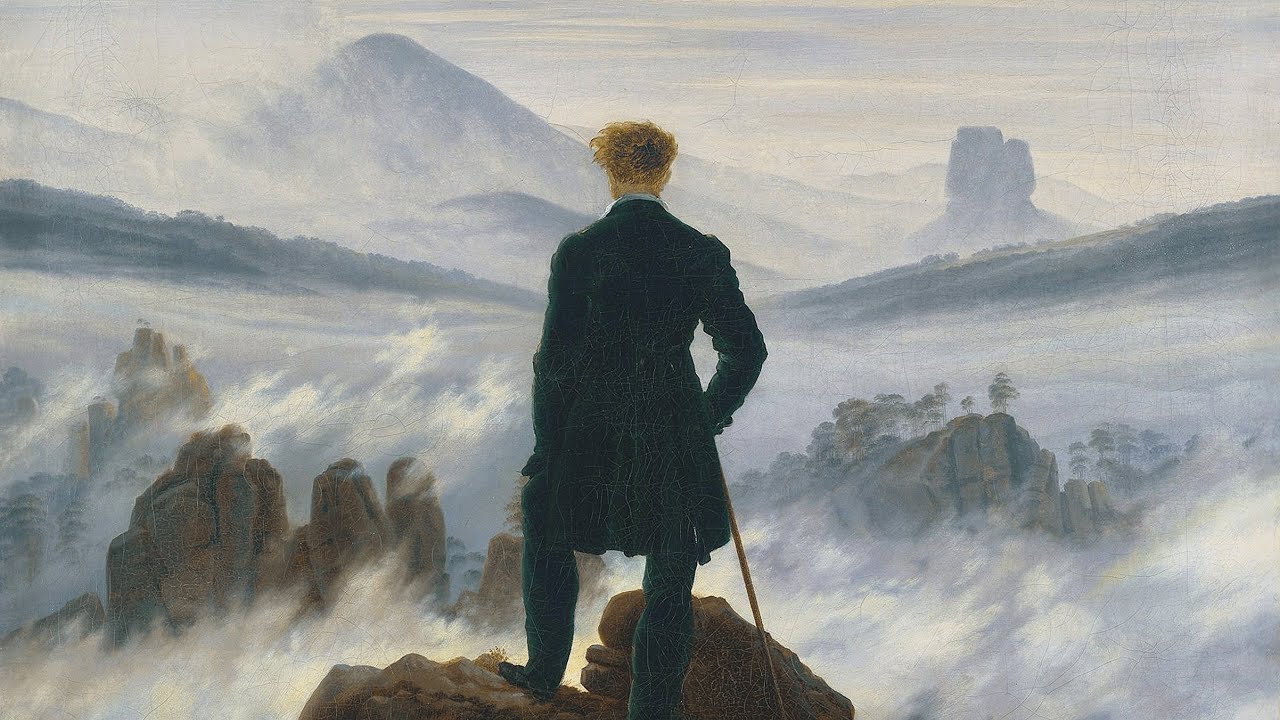
Robert Draws – Wanderer above the Sea of Fog is more than just a painting—it is an invitation into mystery. Painted by Caspar David Friedrich in 1818, this masterpiece captures the soul of Romanticism. A lone man stands on a rocky cliff, facing an endless sea of fog. His back is turned to us, inviting us to see through his eyes. He is both vulnerable and powerful in the vastness before him. Nature surrounds him, mysterious and ungraspable, yet strangely familiar. This painting does not answer questions—it raises them. Why is he alone? What lies beneath the fog? What does he see? The answers, perhaps, lie in ourselves.
Caspar David Friedrich was a German Romantic landscape painter born in 1774. He believed art should express emotion, reflection, and spiritual depth. His works often feature figures in solitude within grand, natural landscapes. Friedrich used nature to explore the relationship between man and the infinite. He painted not what he saw but what he felt. He once said: “The artist should paint not only what he sees before him…” “…but also what he sees within himself.” In Wanderer, Friedrich places man not above nature, but within it. The painting reflects Romantic ideals of introspection and awe. It has inspired generations of thinkers, poets, and artists.
The composition of the painting is strikingly deliberate and symbolic. The central figure is placed with his back to the viewer. His stance is stable, yet he gazes into swirling uncertainty. Soft blues, greys, and greens dominate the color palette. Atmosphere is created through layers of mist and distance. The brushwork is fine, but not overly detailed. The landscape was constructed from different sketches of real places. However, the scene itself is imagined—it never existed as a whole. Friedrich’s technique draws us into both the real and unreal. We are grounded by rock, yet lost in fog.
“Read about: The Night Watch: A Masterpiece of Light and Shadow”
The figure in the painting has no name or clear identity. He becomes a symbol—perhaps of man, perhaps of the viewer. His clothing suggests a gentleman or thinker of his time. Yet he represents more than just a historical moment. He may be a dreamer, a philosopher, or simply an observer. By turning his back to us, he includes us in the experience. We are not looking at him—we are looking with him. This approach invites empathy and introspection. The figure is both personal and universal. His journey becomes our own.
Romantic artists often explored the sublime through powerful images of nature. They portrayed awe-inspiring vastness and untamed beauty. In Wanderer, Friedrich uses fog to obscure large parts of the landscape. This technique builds tension between what we see and what remains hidden. We gaze into the distance, but we lack full clarity. Friedrich places the figure small against the immense scenery. Still, the man stands tall, grounded, and composed. This contrast between humility and strength reflects core Romantic beliefs. Romantic painters honored nature rather than dominating it. Their work encourages us to feel both small and deeply connected to something greater.
“Read more: Exploring the Flavors of Spain: A Review of Barrafina, London”
Wanderer above the Sea of Fog stands as a true icon of Romanticism. Writers, filmmakers, and philosophers frequently reference this powerful image. Scholars interpret the figure as a symbol of existential reflection. Audiences around the world connect with its deep and timeless themes. Publishers use the painting on book covers and music albums. Thinkers and artists continue to spark conversations about self, nature, and identity through it. Museums, classrooms, and private collectors proudly display its reproductions. People admire the artwork for both its visual beauty and emotional depth. Viewers during Friedrich’s time recognized its impact and meaning. Generations since then have felt its quiet yet lasting strength.